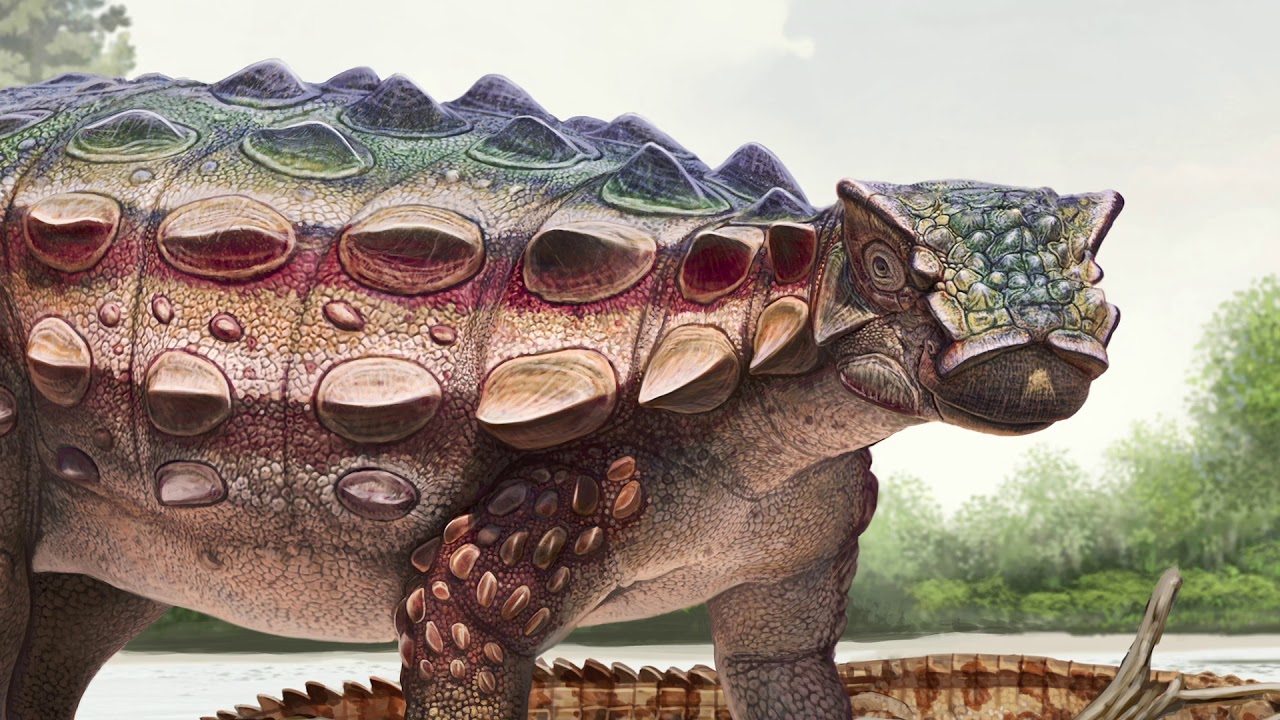
I was kind of surprised when I heard that a new dinosaur had been discovered. But then when I gave it some more thought, it does make sense. I mean, is it logical to think that there were only a dozen or so dinosaurs? I mean, these creatures were around for a very long time, so perhaps my original thinking was naive. What is interesting is that this particular dinosaur developed armor because of the fact that it lived alongside the Tyrannosaurus rex during the Late Cretaceous period.
The new species known as Akainacephalus Jonsoni, is a new species and genus of the ankylosaurid dinosaur. This dinosaur is considered the most complete Late Cretaceous ankylosaur ever found in Utah—or in the entire southwestern United States for that matter. Unlike other North American ankylosaurs that lived around the same time, this particular dinosaur featured spikes and cones on its head and snout, hence its name, which translates to “thorny head.”
The fossilized remains were discovered in Grand Staircase-Escalante National Monument, which is in south-central Utah. The bones were buried in the 76 million-year-old rocks of the Kaiparawits Formation, which is a geological layer composed of sedimentary rocks deposited by rivers and streams. Paleontologists from the Natural History Museum of Utah and the University of Utah managed to pull out a number of bones, including an immaculately preserved and complete skull. In addition to the skull, they also discovered a bony armor, several vertebrae, a forelimb, various hindlimb bones and nearly a complete tail.

Akainacephalus johnsoni had a medium build, measuring between 13 to 16 feet (4-5 m) long and about 3.5 feet tall (1.5 m) at the hips. Its four legs were positioned directly below its body. Like other ankylosaurid dinos, this creature was built for defense; it featured formidable armor from head to tail, including bony plates called osteoderms. Its head was adorned with a crown-like covering of spikes and horns, and the tip of its tail was equipped with a large bony club, which it likely used to ward off predators.
This particular discovery shows that ankylosaurids were more diverse in their physical characteristics than paleontologists thought. These dinosaurs originated in Asia between 125 million to 100 million years ago, but there is no sign of them in the North American fossil record until about 77 million years ago. The authors of the new study, Jelle P. Wiersma from the Natural History Museum of Utah and Randall B. Irmis from the University of Utah, suspect that Akainacephalus and the New Mexican Nodocephelausaurus are more closely related to some Asian ankylosaurids. A working hypothesis is that two separate groups of ankylosaurid dinosaurs existed in North America during this time and that a second migration wave from Asia, likely via a land bridge, made it possible.

This discovery is huge from a scientific perspective, but it’s also really neat. I mean, we do know that certain dinosaurs existed, but it’s also incredible to discover a new species. The dinosaur is on display at the National History Museum of Utah. Check it out if you’re in the area, or if you’re a dinosaur fan, maybe head over to satiate your curiosity.



